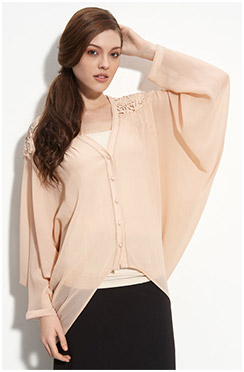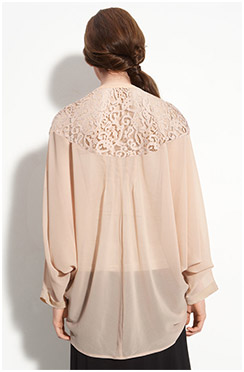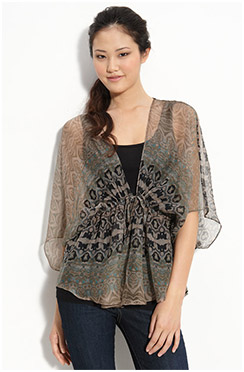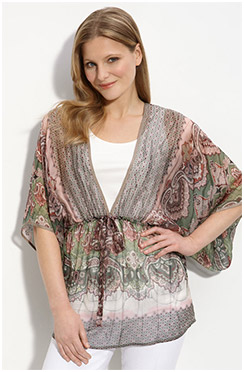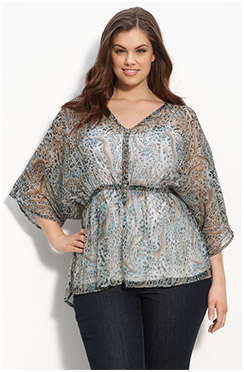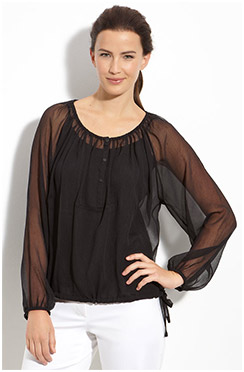I’m not sure whether “grinning” in this context is a universal term, but it is one that I learned years ago when I was a fashion buyer. A garment “grins” when the background behind a garment of sheer fabrication creates a noticeable high colour contrast.
In the photo below, the model wears a low contrast blush coloured camisole under a blush coloured blouse. The garment does not grin on the areas where the camisole layers under the blouse. But the trousers are high contrast to the camisole, so on the areas where the blouse layers over the trousers, the garment grins.
If the model wore a black camisole under this blouse, which is low contrast to the trousers, the garment would not grin. It would be the same colour from top to bottom, excluding the parts where we see the skin of the model through the sheerness of the blouse.
In the photos below, the models wear camisoles that are low contrast to the bottoms, preventing the grinning effect. (Again excluding the areas where skin grins through the sheerness of the fabric).
You can also prevent garment grinning by using a layering piece that is of similar length to the top over it. This can be achieved by wearing an un-tucked camisole of sufficient length. The models below illustrate this perfectly.
I love it when sheer fabric drapes over the skin of arms, necks, shoulders, backs and décolletage, exposing the contrast between the garment underneath and my skin. But generally, I like garments to grin as little as possible between my top and bottom because it eliminates an additional, unflattering horizontal line across the middle of the body.
This post contains affiliate links.
